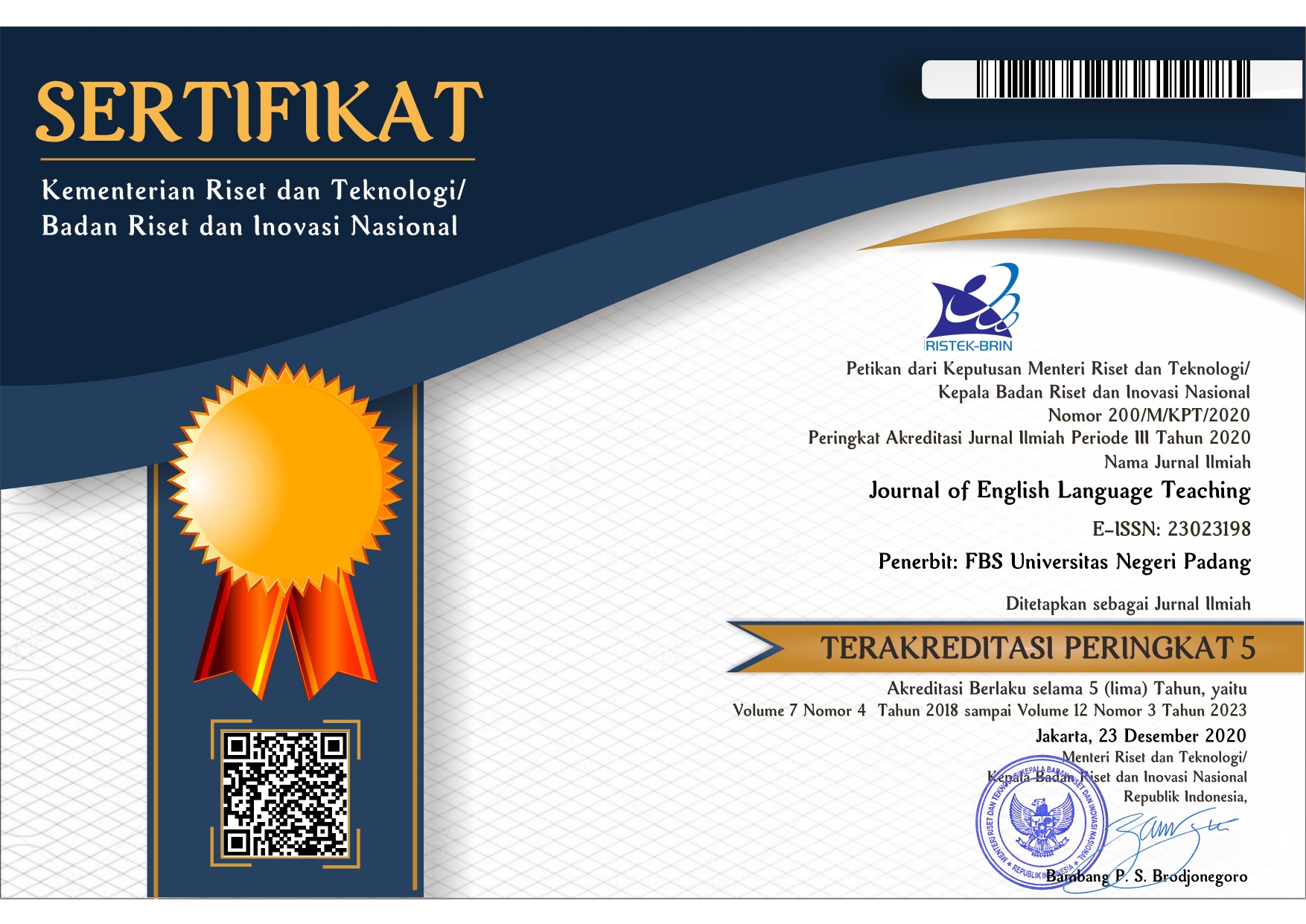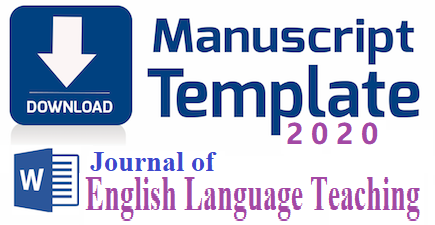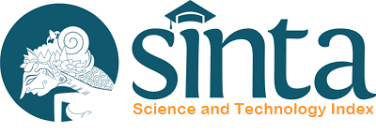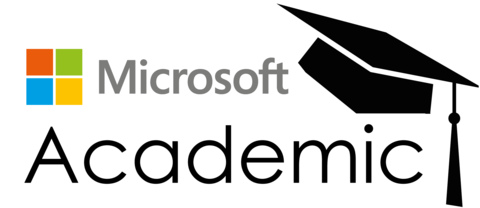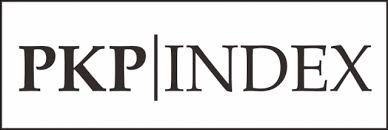EFL Teachers Critical Thinking Behaviors and the Challenges Facing them in Classrooms
 ),
), (1) Najran University
 Corresponding Author
Corresponding Author
Copyright (c) 2021 Thouqan Saleem Yakoub Masadeh
DOI : https://doi.org/10.24036/jelt.v10i2.112215
Full Text:
 Language : en
Language : en
Abstract
The main aim of the present study was to investigate EFL teachers critical thinking behaviors and the kinds of challenges they meet inside English language classrooms. A two-part questionnaire with twenty seven teaching behaviors and sixteen challenges was administered to sixty one Saudi EFL teachers at the secondary and intermediate teaching stages. Results showed that they regularly perform teaching behaviors that nurture their students' critical thinking skill. The most practiced behaviors were related to creating critical thinking-based student response while the least practiced behaviors were belonging to developing students' analysis and synthesis skills. Moreover, challenges related to English language school textbooks, classroom size, training and extra-curricular activities were all significant challenges that need urgent solutions.
References
Al-Kindi, N.S. & Al-Mekhlafi, A.M. (2017). The Practice and Challenges of Implementing Critical Thinking Skills in Omani Post-basic EFL Classrooms. English Language Teaching, 10(12). http://doi.org/10.5539/elt.v10n12p116
Bećirović, S., Hodžić. F. & Brdarević-Čeljo, A. (2019). The Problems of Contemporary Education: Critical Thinking Development in the Milieu of High School Education. European Journal of Contemporary Education, 8(3), 469-482. DOI: 10.13187/ejced.2019.3.469
Black, S. (2005). Teaching Students to Think Critically. Education Digest: Essential Readings Condensed for Quick Review, 70(6), 42-47. https://eric.ed.gov/?id=EJ741259
Changwong, K., Sukkamart, A., & Sisan, B. (2018). Critical Thinking Skill Development: Analysis of a New Learning Management Model for Thai High Schools. Journal of International Studies, 11(2), 37-48. doi:10.14254/2071-8330.2018/11-2/3
Choy, S.C & Cheah, P.K. (2009). Teacher Perceptions of Critical Thinking among Students and its Influence on Higher Education. International Journal of Teaching and Learning in Higher Education, 20(2), 198:206. https://files.eric.ed.gov/fulltext/EJ864337.pdf
Duron, R., Limbach, B., & Waugh, W. (2006). Critical Thinking Framework for any Discipline. International Journal of Teaching and Learning in Higher Education, 17(2), 160-166. https://www.isetl.org/ijtlhe/pdf/IJTLHE55.pdf
Elder, L., & Paul, R. (1994). Critical Thinking: Why We must Transform our Teaching. Journal of Developmental Education, 18(1), 34-35. http://www.jstor.org/stable/42775541
Enciso, O., Enciso. D. & Daza, M. (2017). Critical Thinking and its Importance in Education: Some Reflections. Rastros Rostros, 19 (34), 78-88. DOI: https://doi.org/10.16925/ra.v19i34.2144
Facione, P.A. (2020). Critical Thinking: What it is and Why it Counts. Measured Reasons LLC: Hermosa Beach, CA. https://www.insightassessment.com/wp-content/uploads/ia/pdf/whatwhy.pdf
Hằng, N.V.T. (2019). The implementation of Critical Thinking in Vietnamese Primary School Moral Education Classes. Issues in Educational Research, 29(3), 732-755. http://www.iier.org.au/iier29/hang.pdf
Hardy, J., Foster, C., & Postigo, G. (2015). With Good Reason: A Guide to Critical Thinking. Bridgepoint Education. https://www.amazon.com/Good-Reason-Guide-Critical-Thinking/dp/1621785661
Harizaj, M. & Hajrulla, V. (2017). Fostering Learner’s Critical Thinking Skills in EFL: Some Practical Activities. European Scientific Journal, 13(29). URL:http://dx.doi.org/10.19044/esj.2017.v13n29p126
Haynes, A., Lisic, E., Goltz, M., Stein, B., & Harris, K. (2016). Moving Beyond Assessment to Improving Students' Critical Thinking Skills: A Model for Implementing Change. Journal of the Scholarship of Teaching and Learning, 16(4), 44-61 .DOI: 10.14434/josotl.v16i4.19407
Heard, J., Scoular, C., Duckworth, D., Ramalingam, D., & Teo, I. (2020). Critical Thinking: Definition and Structure. Australian Council for Educational Research. https://research.acer.edu.au/ar_misc/38
Hughes, J. (2014). Critical Thinking in the Language Classroom. ELI Publishing: https://cdn.ettoi.pl/pdf/resources/Critical_ThinkingENG.pdf
Karakoç, M. (2016). The Significance of Critical Thinking Ability in Terms of Education. International Journal of Humanities and Social Science, 6(7). http://www.ijhssnet.com/journals/Vol_6_No_7_July_2016/10.pdf
Kavanoz, S., & Akbaş S. (2017). EFL Teachers' Conceptualizations and Instructional Practices of Critical Thinking. International Online Journal of Education and Teaching (IOJET), 4(4), 418-433. http://iojet.org/index.php/IOJET/article/view/251/180
Kusuma, E.D., Gunarhadi, G., & Riyadi, R. (2018). The Strategies to Improve Critical Thinking Skills through Problem-Based Quantum Learning Model at Primary School. International Journal of Multicultural and Multireligious Understanding (IJMMU), 5(4). DOI: http://dx.doi.org/10.18415/ijmmu.v5i4.
Leen, C.C., Hong, H., Kwan, F.N. & Ying, T.Y. (2014). Creative and Critical Thinking in Singapore Schools. National Institute of Education (NIE) Working Paper Series No. 2, A publication of the Office of Education Research, NIE/NTU: Singapore. https://www.nie.edu.sg/docs/default-source/nie-working-papers/niewp2_final-for-web_v2.pdf?sfvrsn=2
Lorencová, H., Jarošová, E., Avgitidou, S., & Catherine Dimitriadou, C. (2019). Critical Thinking Practices in Teacher Education Programmes: a Systematic Review. Studies in Higher Education, 44(5), 844-859, DOI: 10.1080/03075079.2019.1586331
Mahanal, S., Tendrita, M., Ramadhan, F. Ismirawati, N., & Zubaidah, S. (2017). The Analysis of Students' Critical Thinking Skills on Biology Student. Anatolian Journal of Instruction, 2(2). http://e-aje.net/volumes/254-2017,-volume-2,-number-2
Mok, F. & Yuen, T. (2016). A Critical Evaluation of the Understanding of Critical Thinking by School Teachers: The Case of Hong Kong. Citizenship, Social and Economics Education, 15(1). 28–44 https://doi.org/10.1177/2047173416652146
Nickerson, R. S. (1994). The Teaching of Thinking and Problem Solving. In R. J. Sternberg (Ed.), Thinking and problem solving (pp. 409-449). Volume 2 in Handbook of Perception and Cognition, San Diego, CA: Academic Press. https://doi.org/10.1016/B978-0-08-057299-4.50019-0
Noula, I. (2018). Critical Thinking and Challenges for Education for Democratic Citizenship: an Ethnographic sSudy in Primary Schools in Greece. Educação & Realidade, Porto Alegre, 43(3), 865-886. http://dx.doi.org/10.1590/2175-623674799
Papathanasiou, I.V., Kleisiaris, C.F., Fradelos, E.C., Kakou, K., & Kourkouta, L. (2014). Critical Thinking: The Development of an Essential Skill for Nursing Students. Acta Information Medica, 22(4). Doi: 10.5455/aim.2014.22.283-286
Paul, R. & Elder, L. (2006). The Miniature Guide to Critical Thinking Concepts and Tools. Fourth Edition, Foundation for Critical Thinking. http://www.criticalthinking.org/files/Concepts_Tools.pdf
Paul, R.W., Elder, L., & Bartell, T. (1997). California Teacher Preparation for Instruction in Critical Thinking: Research Findings and Policy Recommendations. A Report Presented to California Commission on Teacher Credentialing, Sacramento. https://files.eric.ed.gov/fulltext/ED437379.pdf
Radulovic, R. & Milan, S. (2017). What is Needed to Develop Critical Thinking in Schools? CEPS Journal 7(3), 9-25. https://www.cepsj.si/index.php/cepsj/article/view/283
Sanders, M. & Moulenbelt, J. (2011). Defining Critical Thinking: How Far Have We Come? Inquiry Critical Thinking across the Disciplines, 26(1), 38-46. https://doi.org/10.5840/inquiryctnews20112616
Saputra, M.D., Joyoatmojo, S., Wardani, D.K., & Sangka, K.B. (2019). Developing Critical-Thinking Skills through the Collaboration of Jigsaw Model with Problem-Based Learning Model. International Journal of Instruction, 12(1), 1077-1094. https://doi.org/10.29333/iji.2019.12169a
Smetanová, V., Drbalová, A., & Vitáková, D. (2015). Implicit Theories of Critical Thinking in Teachers and Future Teachers. Procedia - Social and Behavioral Sciences, 171, 724 –732. DOI: 10.1016/j.sbspro.2015.01.184
Sternberg, R.J., & Williams, W.M. (2002). Educational Ssychology. (Sixth Edition), Wadsworth, Cengage Learning: USA. http://cs.um.ac.ir/images/87/books/Cognitive%20Psychology_Strenberg%206th%20.pdf
Susilo, B.E., Darhim & Prabawanto, S. (2019). Supporting Activities for Critical Thinking Skills Development Based on Students' Perspective. Proceedings of the 1st International Conference on Science and Technology for an Internet of Things, 20 October 2018, Yogyakarta, Indonesia. https://eudl.eu/doi/10.4108/eai.19-10-2018.2281320
Thayer-Bacon, B. (1998). Transforming and Redescribing Critical Thinking: Constructive Thinking. Studies in Philosophy and Education 17(2). https://link.springer.com/content/pdf/10.1023/A:1005166416808.pdf
Thomas, T. (2011). Developing First Year Students’ Critical Thinking Skills, Asian Social Science, 7(4). doi:10.5539/ass.v7n4p26
Thompson, C. (2011). Critical Thinking across the Curriculum: Process over Output. International Journal of Humanities and Social Science, 1(9). http://www.ijhssnet.com/journals/Vol._1_No._9_Special_Issue_July_2011/1.pdf
Tuzlukova, V., Al Busaidi, S. and Burns, S.L. (2017). Critical Thinking in the Language Classroom: Teacher Beliefs and Methods. Pertanika J. Soc. Sci. & Hum. 25 (2), 615 – 634. https://core.ac.uk/download/pdf/153832341.pdf
 Article Metrics
Article Metrics
 Abstract Views : 2041 times
Abstract Views : 2041 times
 PDF Downloaded : 374 times
PDF Downloaded : 374 times
Refbacks
- There are currently no refbacks.
Copyright (c) 2021 Thouqan Saleem Yakoub Masadeh

This work is licensed under a Creative Commons Attribution-NonCommercial 4.0 International License.

